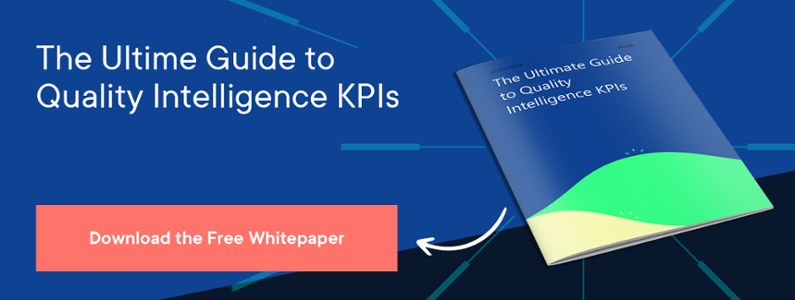When the science of modern quality management was developed in the 1960s, only the very largest industrial concerns would write software to monitor their Quality Control. The pivotal figure in this new discipline, Philip Crosby, worked for Pershing missiles where he developed his concept of ‘zero defects’.
Times have changed. Modern Quality Management software is at once powerful enough to be implemented at Fortune 500 companies, but also cost-effective for small to medium-sized manufacturers. The idea of ‘zero defects’ is also outdated. It focused heavily on motivating (and monitoring) individual workers where today’s digital solutions prefer to let the data do the talking.
All the same, the myth that quality management solutions are expensive and unnecessary still stalks the boardroom of smaller manufacturing businesses. For quality cadres, this is a problem chasing its own tail. A lack of senior management engagement with quality is one of the symptoms of quality management that is less than mature. But achieving that maturity requires the commitment of senior management!
Get buy-in for your confident vision of quality
So how do you convince senior management to throw their weight behind your efforts to improve quality management?
A product recall is the kind of wake-up call you don’t need, but they are very common as a quick scroll through the British Trading Standards website reveals. In April 2019, it ordered the withdrawal from British shops of a mechanized ball server for tennis practice. The so-called Tennis Tower, made in the US, posed a risk of electric shock and/or entrapment. In the same month, a range of duvets sold by the catalog outlet Argos failed routine fire and safety tests, and purchasers were warned to stop using the bedding immediately.
Perhaps a timely quality management X-ray might have prevented some of these issues. Manufacturers that use our Quality Maturity Matrix to self-assess their performance are invariably surprised by the results. These surprises are creative because they point the way forward.
There is often a large gap in perception between how senior management regards quality management (and their own role in it) and the views from the shop floor and the laboratories where the goods are actually manufactured and tested.
This is telling senior management something very important. Are they ready for a change?
The trouble with quality management is that it can take a while for smart automation and omnipresent process and data integration to translate into quantifiable, bottom-line improvements in quality.
So how about the cost-savings argument? Can good, old-fashioned ROI clinch it for you?
In a previous blog, we were rather cavalier about the cost. We argued that quality management maturity involved a strategic re-calibration of how much you prevent and how much you correct. No one gets this right 100% of the time (or should aim to get it right 100% of the time), but successful Quality Intelligence generally aims to spend around 80% of its quality budget on prevention, 20% on correction. Other than that, we said, “the [total] costs will take care of themselves”.
Better quality management is cheaper quality management.
ROI within four months of implementation
There are all kinds of ways in which this true, and some of these savings are felt almost immediately. In our blog, No more blind data for Quality Management, we saw that even the average medium-sized manufacturing business could save more than 1,000 man hours a year just by making its quality data more easily accessible in a quality management platform.
This is the reading from our savings calculator which we compiled with our customers, a crucial point. We didn’t pluck our ROI estimates out of thin air, or model what we thought ought to be the benefits of our quality management platform. No, the ROI tool is a reflection of what customers have told us.
For the ‘average’ manufacturer with a workforce of 50 and 500 controlled documents, processing 300 QESH registrations a year, overseeing 100 QC inspections a week, and generating a weekly average of 10 Certificates of Analysis, an investment in the AlisQI solution takes four months to pay for itself. This ROI includes both the license costs and the initial onboarding costs and is based on an hourly rate of €30.
As we said, this is only an estimate but one developed out of the actual experience of many manufacturing companies. But what about implementation and maintenance? Do vendors make money through the backdoor through expensive consultancy and support?
We shall look at this question of vendor business models in our next blog. In the meantime, make sure you only shortlist vendors of integrated quality management solutions that will be cost-effective quickly.
How to prepare for Quality Intelligence?
In this era of smart manufacturing, quality will become smart as well. This transition will not happen overnight and this will not happen in a linear way, but we know that integration and automation play a key role. This white paper presents a springboard to change and asks organizations to self-assess to what extent they are ready for Quality Intelligence and to leverage tomorrow’s possibilities.



